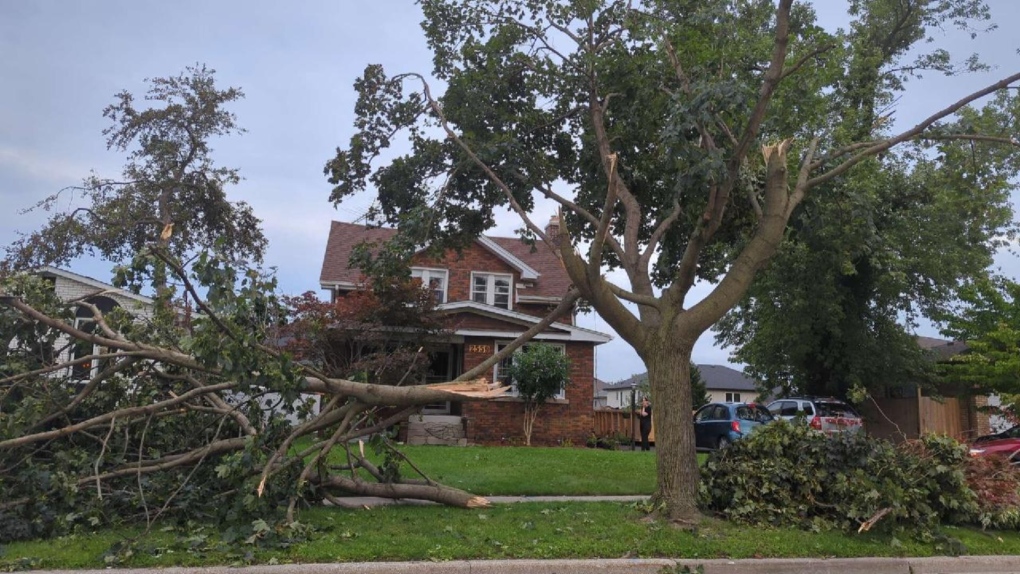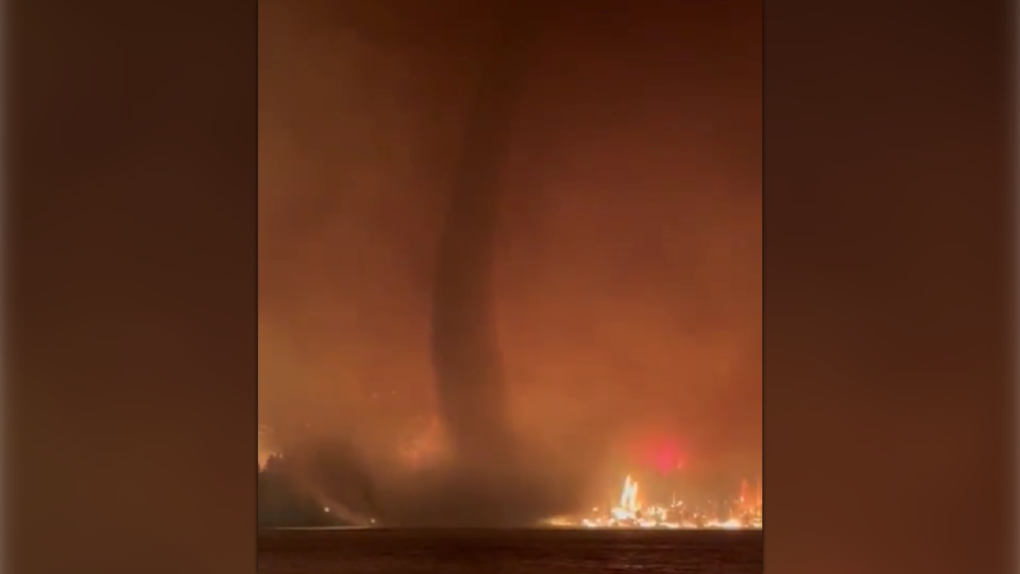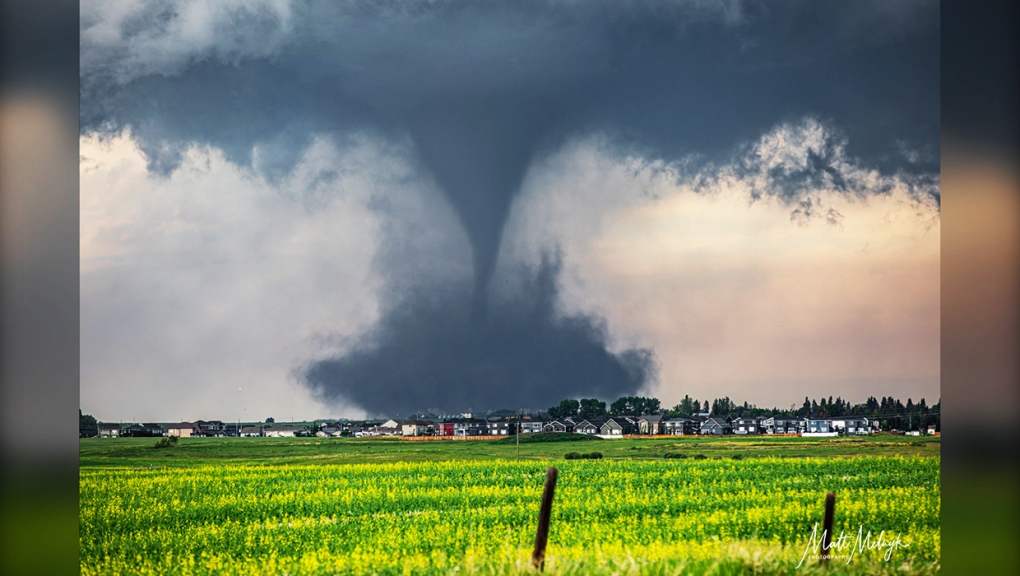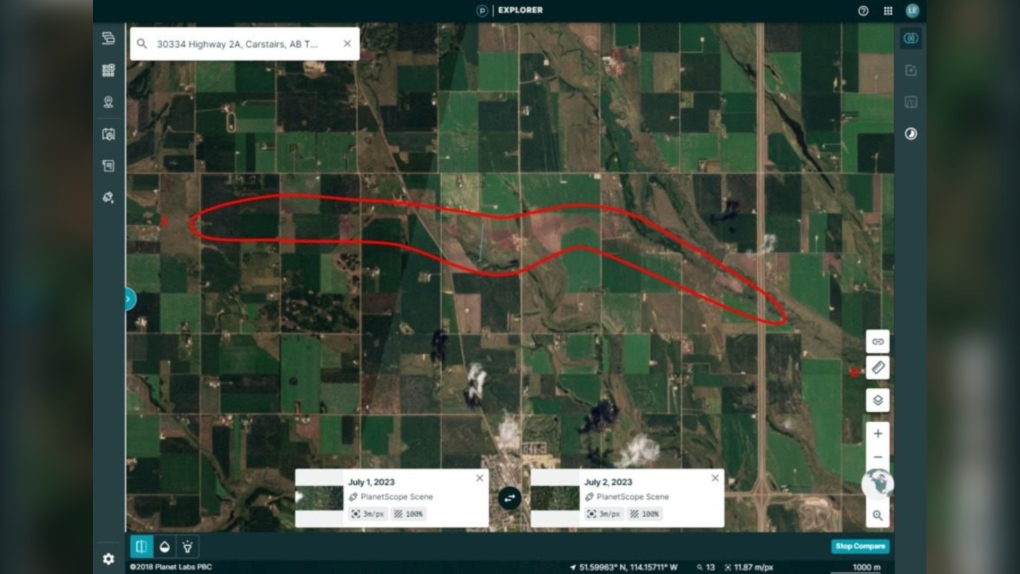'Fewer and milder' tornadoes in Canada in 2023: Northern Tornadoes Project
With a total of 86 recorded tornadoes, 2023 was a quieter year across Canada following a record-breaking 2022, according to Western University’s Northern Tornadoes Project — but 2023 wasn't without its notable twisters.
Based out of London, Ont.’s Western University, the Northern Tornadoes Project (NPT) recorded a total of 86 tornadoes, including one fire-generated tornado in British Columbia, during 2023.
2023’s number pales in comparison to the record-breaking number of tornadoes in 2022, in which there were a total of 129 recorded tornadoes across the country.
According to NPT Executive Director David Sills, it wasn’t just the number of tornadoes that made it a “relatively quiet tornado year” across the nation, but namely the lack of major tornadoes.
“There were only five tornadoes with damage rated EF2 or higher across Canada in 2023, and that’s the lowest since NTP started its investigations in 2017, and far less than the 30+ that was recorded in 2021 and 2022,” said Sills.
Because NTP researchers are constantly analyzing and updating severe weather data from across the country, more tornadoes and downbursts may be added to the total number of storms over time. For example, in 2022 preliminary data revealed 117 tornadoes in Canada, but further investigation brought the number to 129 tornadoes following additional investigation.
 Extensive tree damage is seen in the south Windsor, Ont. area following a tornado on Aug. 24, 2023. (Source: Northern Tornadoes Project)
Extensive tree damage is seen in the south Windsor, Ont. area following a tornado on Aug. 24, 2023. (Source: Northern Tornadoes Project)
Notable tornado events
Despite the “fewer and milder” tornadoes in 2023 however, last year was notable due to a tornado near Didsbury, Alta. on July 1, 2023 which measured an EF4 on the Enhanced Fujita Scale — representing only the second EF4 tornado since the NPT began investigating in 2017.
Also notable in 2023 was the documentation of a rare fire-generated tornado in British Columbia which occurred during an intense August wildfire season.
According to the NPT, out of the 86 verified tornadoes in 2023, 49 per cent would likely not have been documented without NPT investigations.
 A 'fire whirl' or 'fire tornado' is seen in this screen grab from a video shared by the B.C. Wildfire Service on Aug. 22, 2023.
A 'fire whirl' or 'fire tornado' is seen in this screen grab from a video shared by the B.C. Wildfire Service on Aug. 22, 2023.
Which provinces were the most hit?
The 2023 season began in May and ended in October, and the province of Ontario recorded the highest number of storms with 30 events occurring over land and an additional nine tornadoes, also known as waterspouts, occurring over bodies of water.
The NPT said this data is also consistent with results from 2020 to 2022.
Alberta claims second-place for being the most active province, with a recorded 19 tornadoes in 2023, 10 of which occurred during a June 14, 2023 outbreak.
Manitoba also made the list due to its high number of downbursts. In 2023, all downbursts were rated EF0 to EF1, with 18 and 27 downbursts reported in southern Manitoba and southern Ontario respectively.
 Canada Day tornado photographed near Didsbury, Alta., Canada, by Matt Melnyk, July 1, 2023
Canada Day tornado photographed near Didsbury, Alta., Canada, by Matt Melnyk, July 1, 2023
The role of satellites in NPT investigations
In total, 394 investigations were completed in 2023 which included the review of satellite imagery.
As of early 2024, an annual search had been completed of the most tornado-prone forested areas in Canada, covering an area of 2.91 million square kilometres.
Because of this search, an additional 15 tornadoes were identified that otherwise would have gone unrecorded. Since the NPT began its research in 2017, the total number of tornadoes verified due to the use of satellite imagery has climbed to 186.
“Satellite-based investigations are key to finding wind damage in remote areas like Canada’s boreal forest, and as new satellites bring increasing image resolution, satellite surveys will become increasingly important, even in more populated areas,” said Sills.
The Northern Tornadoes Project is a partnership between London’s Western University and ImpactWX which seeks to better understand tornado occurrences in Canada, mitigate harm to people and property, and future impacts from climate change.
 A high-resolution satellite image depicts ground scouring through crops following a tornado near Didsbury, Alta. on July 1, 2023. The red line indicates the the path visible from satellite imagery, while the ‘s’ and the ‘e’ mark the start and end points of the path found by the ground/drone survey team. (Source: Western University)
A high-resolution satellite image depicts ground scouring through crops following a tornado near Didsbury, Alta. on July 1, 2023. The red line indicates the the path visible from satellite imagery, while the ‘s’ and the ‘e’ mark the start and end points of the path found by the ground/drone survey team. (Source: Western University)
CTVNews.ca Top Stories

Trump again calls to buy Greenland after eyeing Canada and the Panama Canal
First it was Canada, then the Panama Canal. Now, Donald Trump again wants Greenland. The president-elect is renewing unsuccessful calls he made during his first term for the U.S. to buy Greenland from Denmark, adding to the list of allied countries with which he's picking fights even before taking office on Jan. 20.
Quebec fugitive killed in Mexican resort town, RCMP say
RCMP are confirming that a fugitive, Mathieu Belanger, wanted by Quebec provincial police has died in Mexico, in what local media are calling a murder.
Multiple OnlyFans accounts featured suspected child sex abuse, investigator reports
An experienced child exploitation investigator told Reuters he reported 26 accounts on the popular adults-only website OnlyFans to authorities, saying they appeared to contain sexual content featuring underage teen girls.
King Charles ends royal warrants for Ben & Jerry's owner Unilever and Cadbury chocolatiers
King Charles III has ended royal warrants for Cadbury and Unilever, which owns brands including Marmite and Ben & Jerry’s, in a blow to the household names.
DEVELOPING Evacuation order issued for Edmonton building where security guard was killed
An apartment building where a security guard was killed earlier this month is being evacuated.
U.S. House Ethics report finds evidence Matt Gaetz paid thousands for sex and drugs including paying a 17-year-old for sex in 2017
The U.S. House Ethics Committee found evidence that former Rep. Matt Gaetz paid tens of thousands of dollars to women for sex or drugs on at least 20 occasions, including paying a 17-year-old girl for sex in 2017, according to a final draft of the panel's report on the Florida Republican, obtained by CNN.
Ex-OpenAI engineer who raised legal concerns about the technology he helped build has died
Suchir Balaji, a former OpenAI engineer and whistleblower who helped train the artificial intelligence systems behind ChatGPT and later said he believed those practices violated copyright law, has died, according to his parents and San Francisco officials. He was 26.
Young mammoth remains found nearly intact in Siberian permafrost
Researchers in Siberia are conducting tests on a juvenile mammoth whose remarkably well-preserved remains were discovered in thawing permafrost after more than 50,000 years.
LIVE UPDATES Parts of Ontario under snowfall warning Monday as holiday travellers hit the road
Holiday travellers and commuters could be in for a messy drive on Monday morning as a significant round of snowfall moves into the region. Here are live updates on the situation in Toronto.


































